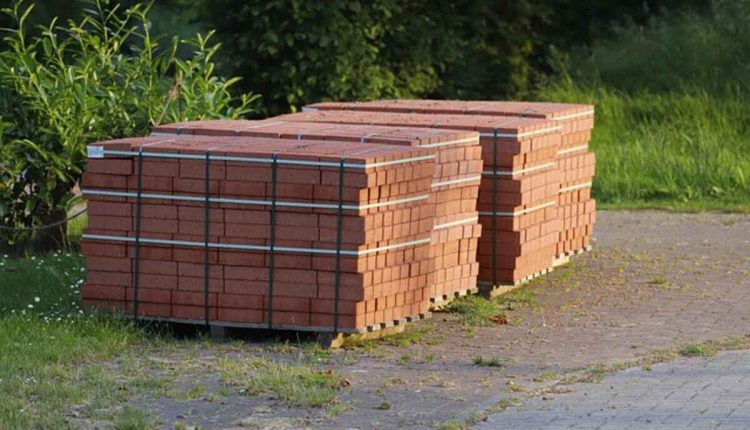Asphalt Paving Systems
Asphalt paving systems improve both surface quality and cost while mitigating service trench damage and prolonging pavement lifespan by mitigating environmental stresses and traffic loads. Typically, the Interesting Info about asphalt kittanning pa.
Base courses (also referred to as blacktop) are essential components of asphalt pavements and serve to evenly distribute traffic and structure weight in order to minimize rutting.
Compaction
Compaction is one of the most critical steps involved with road construction, yet many contractors don’t fully comprehend its significance or perform it effectively. Without adequate compaction, asphalt pavement will eventually fail prematurely and necessitate costly repairs.
Compaction’s primary aim is to reach a specific density for hot mix asphalt mixtures, which is directly proportional to air-void content. Air voids in an asphalt mixture contribute significantly to fatigue failure—more air voids translate into a shorter pavement lifecycle.
To achieve the desired density, hot mix asphalt must remain at a constant temperature and be available to pavers throughout its mixing. Crews should not stop the paving while the mixer is active to maximize compact time and density, as this could reduce the time available to compact material.
Base temperature, mix laydown temperature, and layer thickness are among the key variables affecting how quickly HMA mixtures can be compacted. They all play a critical role in predicting the mixture’s cooling curve and how quickly it cools to an ideal state for compaction. Furthermore, the number of breakdown roller passes, rolling zone size, and roller speed all play an integral part in reaching the optimal compaction of an asphalt mixture.
Spreading
Asphalt surfaces must be installed and compacted correctly to have maximum durability. An improperly placed mat can lead to water accumulation and damage, while improper compaction could cause cracking and potholes. An asphalt paving system that delivers materials at the correct rate and quantity could mitigate both issues.
APS is an established specialty construction firm with more than three decades of experience building and maintaining asphalt roads. Our sophisticated equipment enables us to deliver superior hot-mix asphalt paving for all kinds of infrastructure projects.
Predose is the initial step of asphalt paving and involves weighing and drying aggregate components of an asphalt pavement recipe using a belt weigher and rotary dryer to reduce moisture content. Meanwhile, a binder that holds aggregates together remains separate in heated tanks to keep its liquid consistency.
Once an asphalt paver’s hopper is full of the necessary ingredients, they are released via a hydraulically folding hopper wing at the front of the machine and dumped onto the ground via hydraulic pressure. From there, asphalt is spread evenly with a screed until it reaches the desired height—depending on which type and size of screed is used (fixed or extendable in length), thickness will depend upon it.
Mixing
Asphalt mixture is the heart of any paving project. Consisting of aggregates, bitumen, and plastic material, the mixture is prepared at an asphalt mixing plant – either stationary or mobile, using either continuous drum mixing or intermittent forced mixing methods to make its mix. Mixing processes may either produce hot mixes or cold mixes depending on the desired result.
Cold-mix asphalt remains soft at cold temperatures while also repelling water, making it the preferred solution for pothole repairs. A cold mix consists of coarse aggregates mixed with less bitumen, while hot mixes contain fine and sand-sized aggregates for enhanced structural, friction, surface lifts, and patching needs.
Base courses are located beneath the surface layer of road pavement and are designed to withstand even the highest shear stresses. Their purpose is to evenly distribute traffic and environmental loads so as not to expose unbound layers below to unnecessary strain or stress; typically, this is achieved through providing sufficient stone-on-stone contact and stiffness, while adding cement bypass dust helps ensure the good binding properties of their composition.
Paving
Once materials are ready, specialized paving equipment spreads asphalt evenly on the ground and compacts it to eliminate voids and improve density—helping prevent future pavement failures like rutting or cracking. After compaction has taken place, a final finishing machine applies a layer of material over it to create an even surface resistant to traffic and water.
An impervious surface that does not properly drain away excess water and debris can lead to severe structural damage, potholes, depressions, and upheavals. Properly sloping all paved surfaces to promote water drainage is vitally important.
Wolf Paving provides an undercutting service that replaces soft soil layers beneath pavement structures with stronger aggregate materials for optimal strength, effectively eliminating alligator cracking.
Recycling asphalt material to use in new paving projects is an environmentally sustainable solution that reduces landfill waste while protecting natural resources through reduced energy use for production. Furthermore, recycled asphalt saves agencies money over time by eliminating disposal fees, decreasing maintenance and repair bills, reducing fuel consumption costs, and reducing greenhouse gas emissions.


